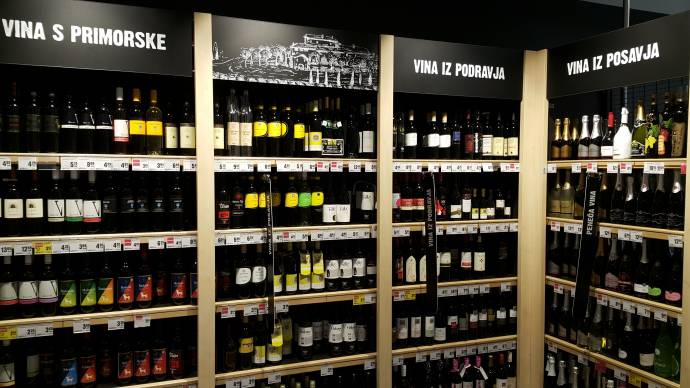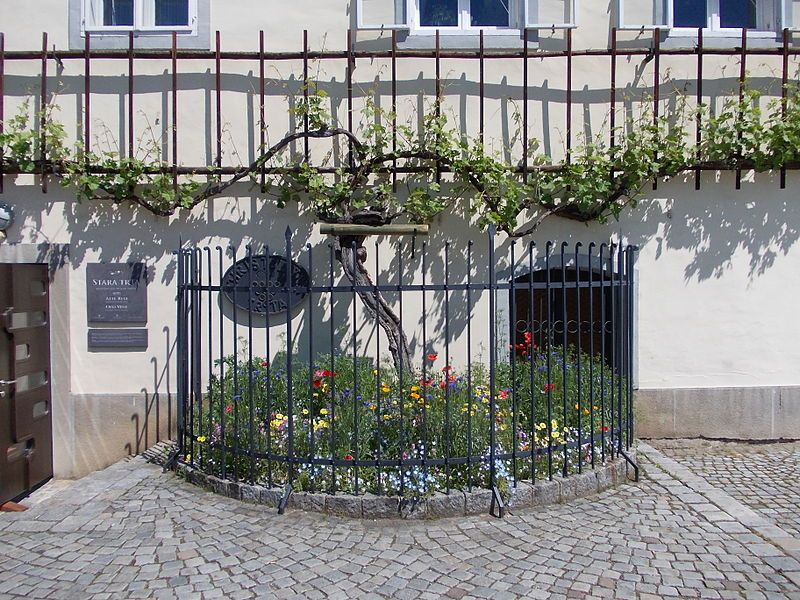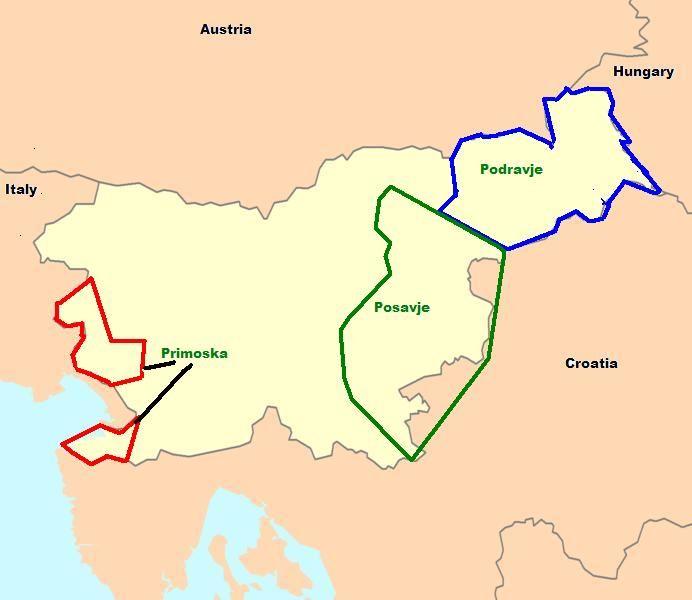January 7, 2018
Wikipedia quotes the following from Jancis Robinson’s Oxford Companion to Wine: “unlike major European wine regions, Slovenia's viticultural history predates Roman influences and can be traced back to the early Celtic and Illyrian tribes who began cultivating vines for wine production sometime between the 5th and 4th century BC.”
Appropriately, the oldest vine in the world is also located in Slovenia, more precisely in Maribor, although it was almost certainly not planted by the Celts, as it’s only about 400 years old.
Photo: Janez Drilc, Wikimedia Commons, CC 1.0
This old vine is of a variety called žametovka (žamet = velvet), also known as modra kavčina, one of the seven Slovenian autochthonous varieties, although according to another of Robinson’s works, Wine Grapes: A Complete Guide to 1,368 Vine Varieties, which she wrote in a cooperation with another Master of Wine (MW), Julia Harding, and a geneticist José Vouillamoz, there are only six. The seventh one is pinela from the Vipava Valley which, according to the Slovenian certified taster for the organoleptic evaluation of wine and moderator of The Third Wine website, Staša Cafuta Trček, while DNA tests haven’t confirmed the matter yet, all Vipava viticulturists believe that the local variety differs from the Friulian one with which it is usually associated. Furthermore, states Trček for Dnevnik, the oldest vine žametovka is not autochthonous to the region of Styria where Maribor is located, but to Dolenjska, the Lower Sava Region.
There are three wine growing regions in Slovenia, each with its own specific climate and soil characteristics, which influence the sensory attributes of wine and therefore the selection of the varieties cultivated in each area. These are the Drava Wine-growing region (Podravje), the Lower Sava Wine-growing Region (Posavje) and the Littoral Wine-growing region (Primorska).
Agne 27 CC BY-SA 3.0
These regions will be introduced one by one in our weekly posts on Slovenian wine, along with the most popular, best or interesting bottles you can get from each one of them. But before we move to the regional differences and other details, let me give you some simple advice on how to find some basic information on wine from the label if you know nothing else but the colour of drink in front of you.
Wine labels include the quality category of wine and sweetness level. The quality category is usually written in Slovenian and includes four grades, from lowest to highest: namizno vino (table wine), deželno vino PGO (country wine with a certified geographic emblem), kakovostno vino ZGP (quality wine with protected geographic origin), vrhunsko vino ZGP (premium quality wine with protected geographic origin):
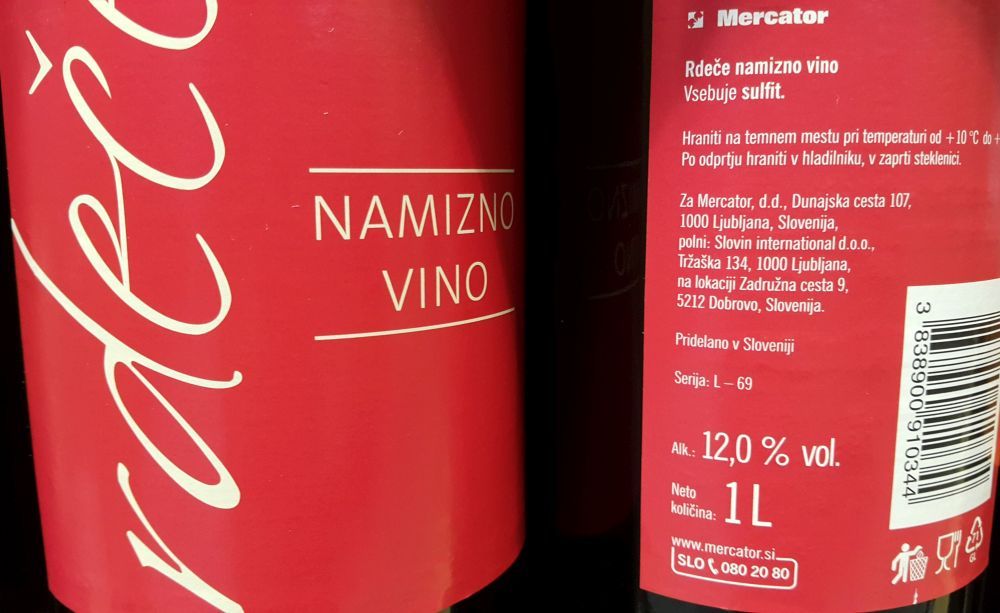
Namizno vino, (table wine) usually also labelled namizno belo (white) or namizno črno (red)
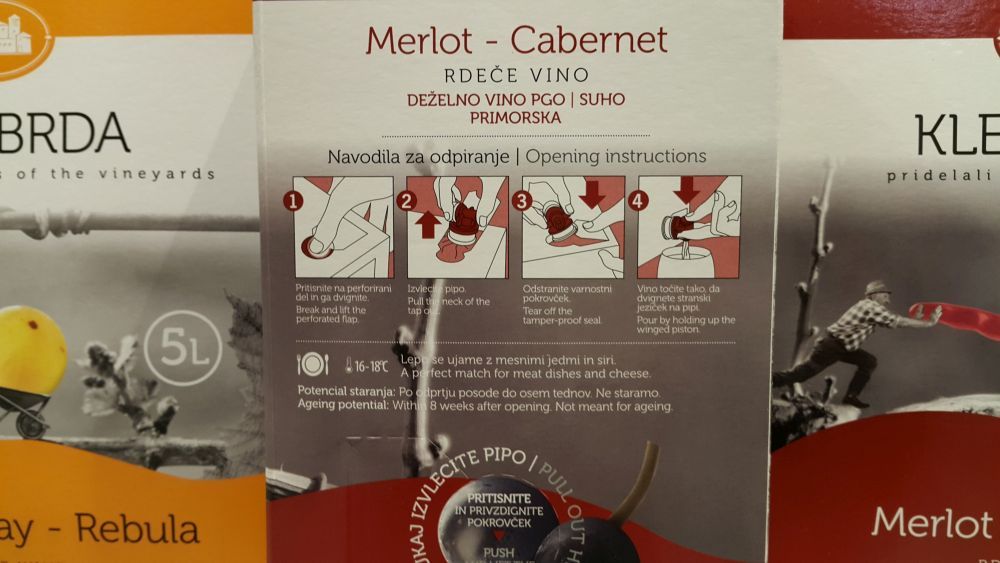
Deželno vino PGO (country wine with a certified geographic emblem), with instruction on how to install pipe on the 5l box.
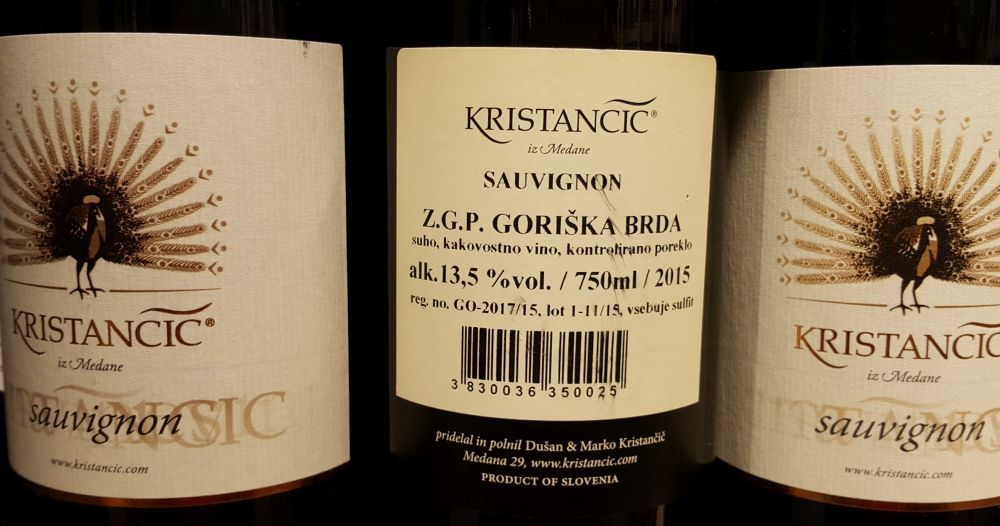
Kakovostno vino ZGP (quality wine with protected geographic origin), the most common quality label you can find in stores
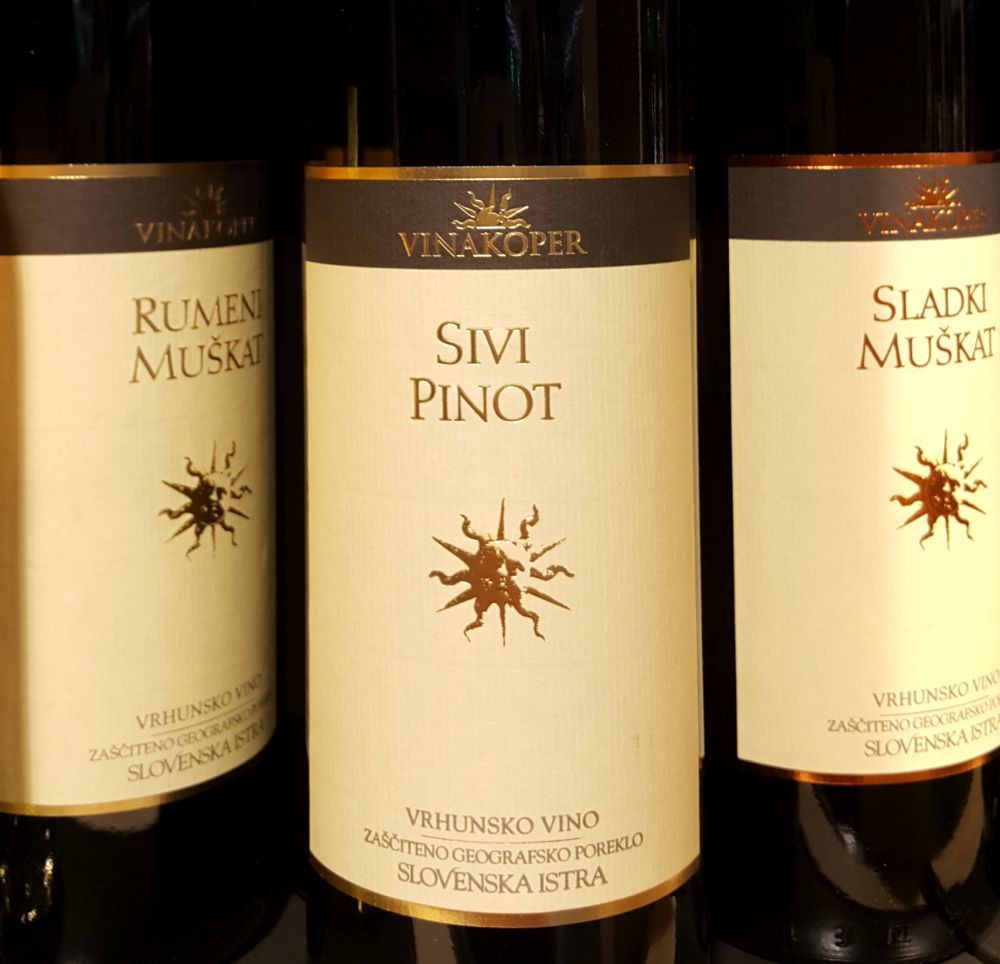
Vrhunsko vino ZGP (premium quality wine…), many good bottles available below the 10 EUR price
The sweetness level of the wines ranges from suho (dry), polsuho (medium-dry), posladko (medium-sweet) and sladko (sweet).

Kakovostno vino ZGP (quality wine), suho (dry)

Kakovostno vino ZGP (quality wine), polsuho (medium-dry)
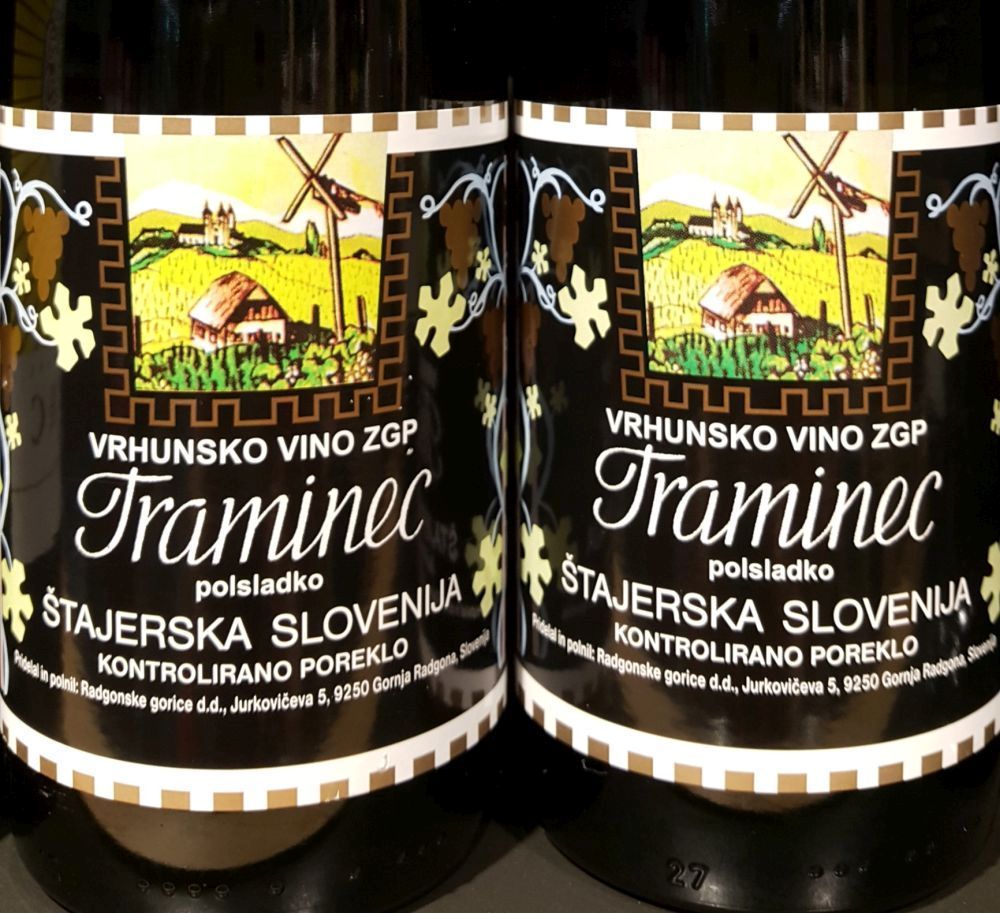
Vrhunsko vino ZGP (premium quality wine), Traminec, polsladko (medium-sweet)
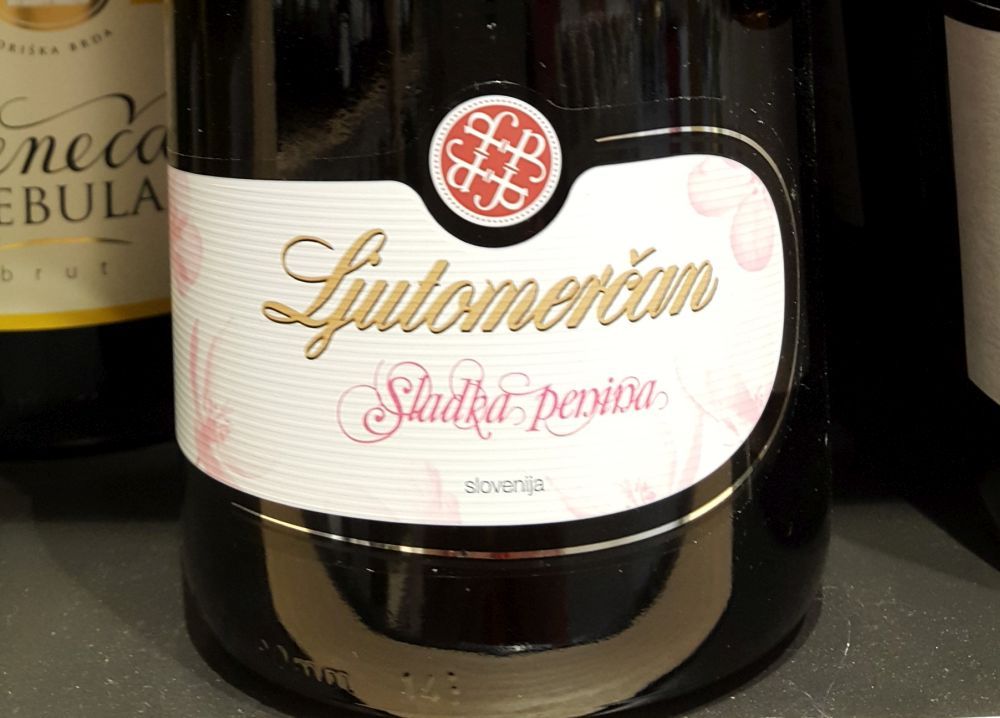
Sladka penina Ljutomerčan (sweet sparkling wine)
Another label you might come across is of the PTP, or posebno tradicionalno poimenovanje (special traditional name) which is usually applied to a traditional Slovenian wine from a specific region, such as Teran, below:
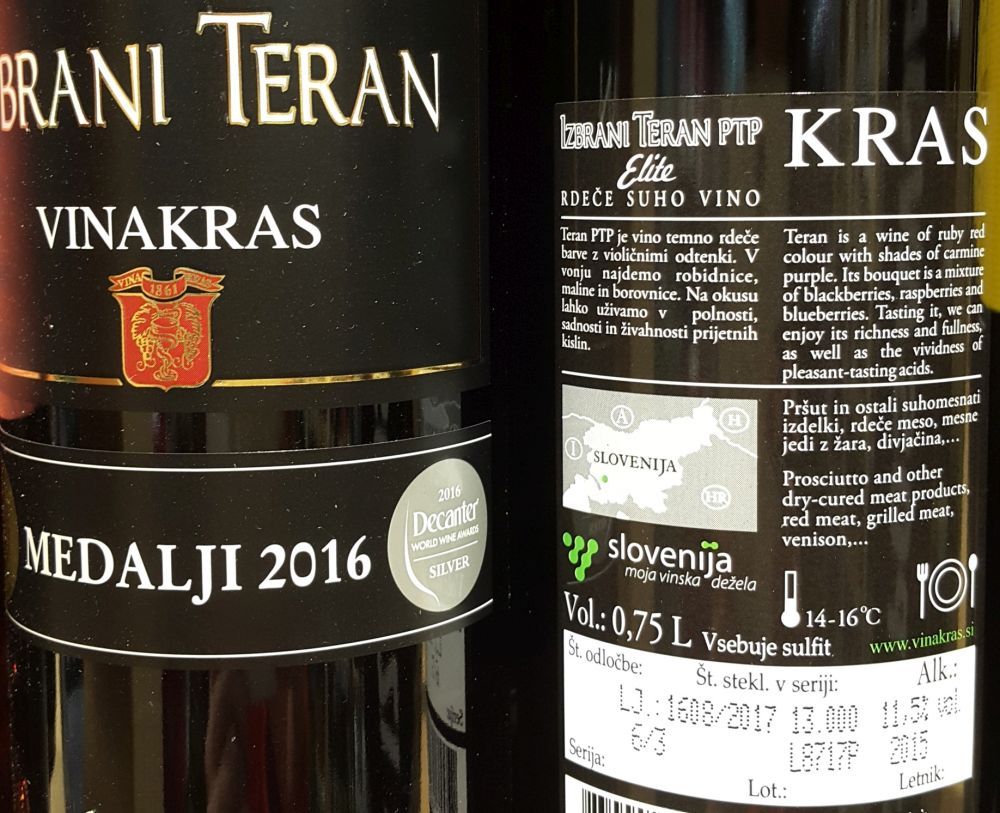
In our next Slovenian wine post, we will look into wines of Podravje (Drava wine-growing region) and try to explain what is that makes them different and unique. Na zdravje!

